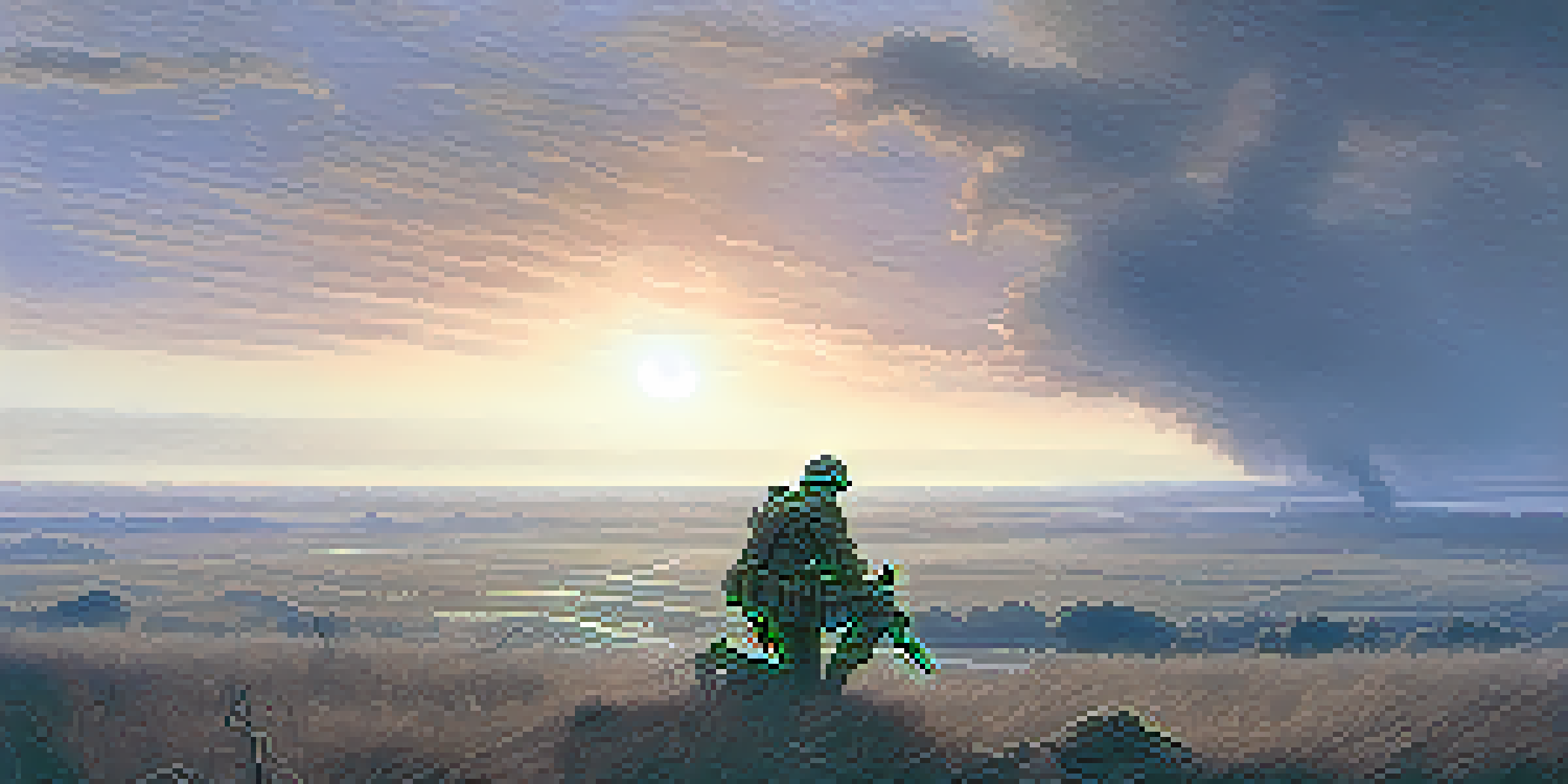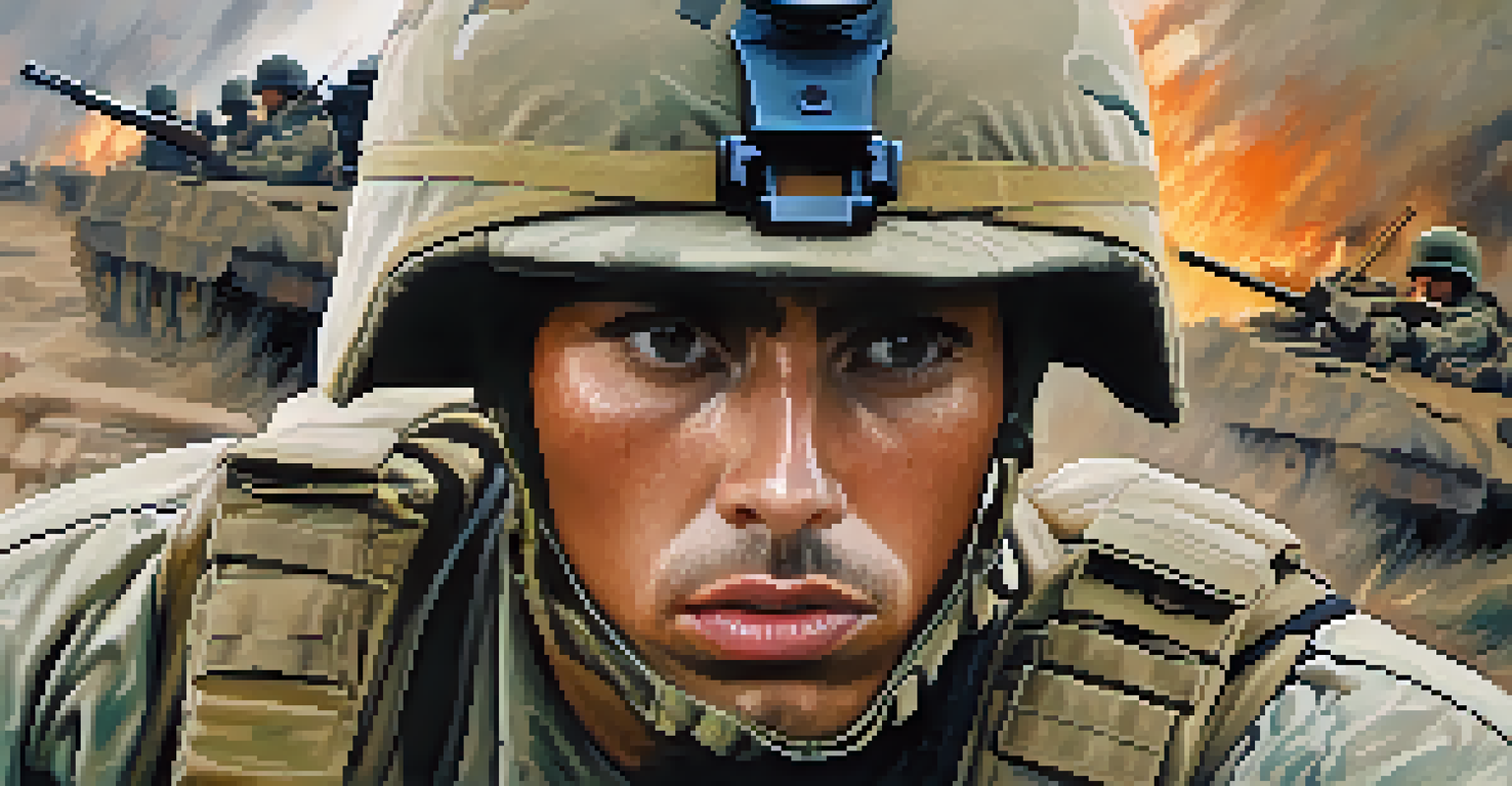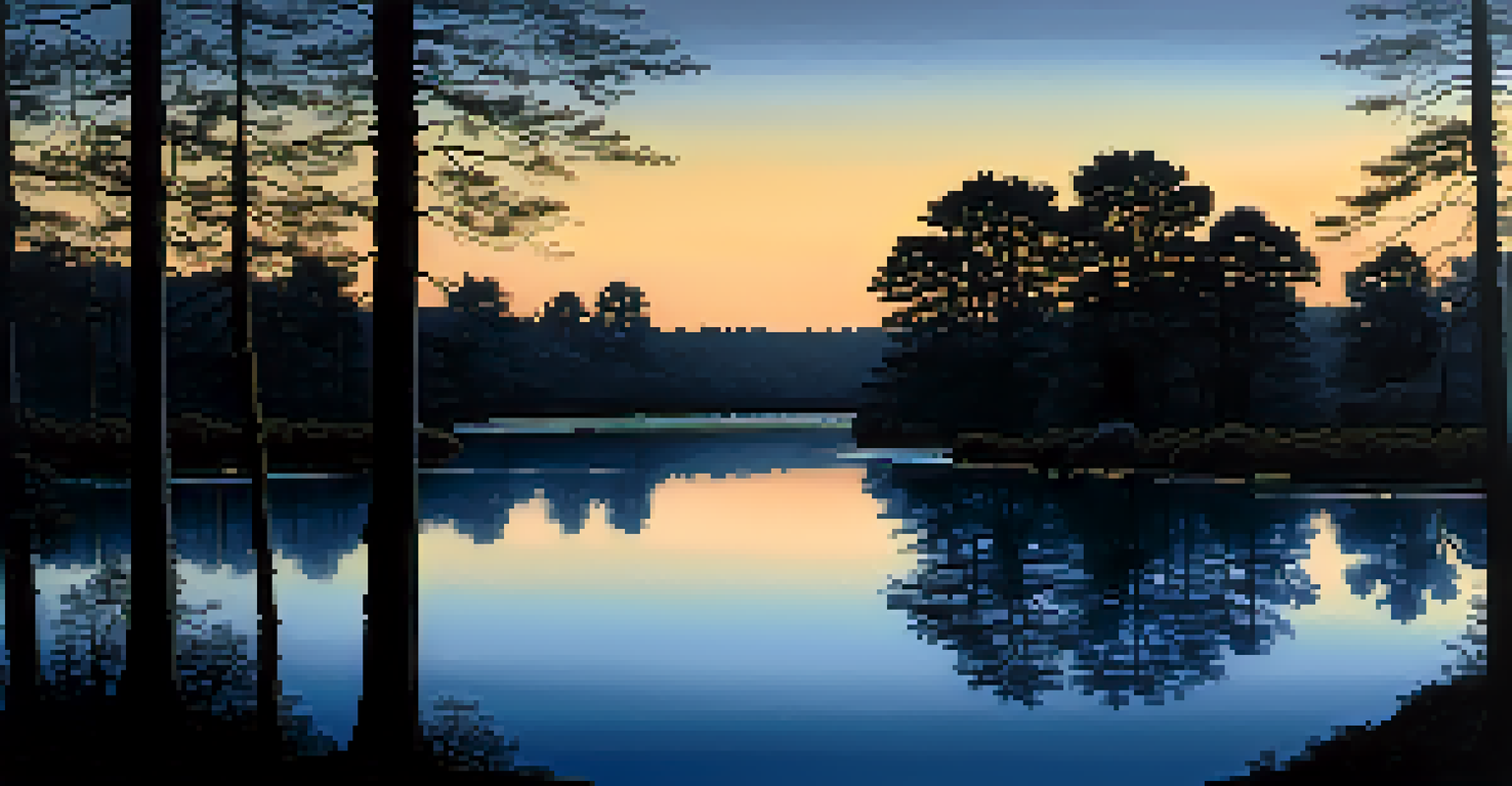Cinematic Techniques: How Filmmakers Portray War

Establishing the Tone: The Use of Music and Sound
Music and sound play a crucial role in setting the emotional tone of a war film. From the haunting melodies that evoke sadness to the intense crescendos that build suspense, soundtracks guide viewers' feelings throughout the narrative. For example, the score of 'Saving Private Ryan' amplifies the chaos of battle, making viewers feel the urgency and despair of war.
Music can change the world because it can change people.
Moreover, sound design, including the use of silence, can be just as powerful. A sudden quiet can signal a dramatic shift, allowing the audience to absorb the weight of a moment. This technique is often used in scenes of loss or reflection, where the absence of sound speaks volumes.
By carefully selecting music and sound effects, filmmakers not only enhance the storytelling but also create a visceral experience that resonates long after the credits roll.
Cinematography: Crafting the Visual Language of War
Cinematography—the art of capturing visual images—plays a pivotal role in depicting the harsh realities of war. Filmmakers often use handheld cameras to create a sense of immediacy, making audiences feel like they are right in the middle of the action. Movies like 'Black Hawk Down' utilize this technique to immerse viewers in the chaos of combat.

Additionally, the choice of camera angles can influence how we perceive the conflict. Low angles can make soldiers appear heroic, while high angles can emphasize vulnerability. This visual manipulation helps to convey different narratives about war, whether glorifying heroism or highlighting the tragedy of loss.
Music Shapes Emotional Tone
Music and sound design are essential in war films, guiding viewers' emotions and amplifying the narrative's impact.
Through thoughtful cinematography, filmmakers can evoke emotions that elicit empathy, allowing viewers to grasp the complexities of war beyond the battlefield.
Editing: Pacing and Rhythm in War Narratives
Editing is a powerful tool that shapes the narrative structure and emotional rhythm of a war film. Quick cuts between scenes can create an intense feeling of urgency and chaos, as seen in '1917', where the continuous shot style immerses viewers in real-time events. This pacing mimics the unpredictable nature of war, enhancing the viewer's experience.
The camera is a weapon. It can be used to tell the truth, or it can be used to manipulate the truth.
Conversely, slower edits during moments of reflection can allow audiences to absorb the gravity of loss and sacrifice. This contrast in pacing helps balance the chaotic action with quieter, more contemplative moments, providing a fuller understanding of the soldiers' experiences.
Ultimately, effective editing not only maintains viewer engagement but also deepens the emotional impact of the story, making the portrayal of war resonate on a personal level.
Color Grading: Setting the Mood Through Visuals
Color grading is a subtle yet impactful technique that filmmakers use to influence the mood of a war film. War scenes often lean toward muted tones and desaturated colors to evoke feelings of despair and hopelessness, as seen in 'Saving Private Ryan'. This choice reflects the grim realities of combat, contrasting sharply with lighter scenes that may symbolize hope or peace.
Warm hues can evoke camaraderie among soldiers, while colder tones might suggest isolation or danger. By manipulating color palettes, filmmakers can guide audience emotions and enhance the storytelling, making the viewer feel the weight of each moment.
Cinematography Evokes Empathy
Thoughtful cinematography captures the harsh realities of war, making audiences feel the intensity and complexities of conflict.
Through thoughtful color choices, filmmakers create a visual language that complements the narrative, reinforcing the emotional stakes of the story.
Character Development: The Human Side of War
War films often focus on character development to highlight the human side of conflict. By delving into the backstories and motivations of soldiers, filmmakers provide audiences with relatable characters whose struggles resonate deeply. In films like 'Full Metal Jacket', viewers witness the transformation of individuals under the stress of war, making their journeys all the more impactful.
Developing robust characters allows for a multi-dimensional portrayal of war, showcasing not just the physical battles but also the internal conflicts faced by soldiers. This dual focus helps audiences connect emotionally, fostering empathy for those impacted by war.
Ultimately, strong character arcs enrich the narrative, reminding viewers that behind every soldier is a person with dreams, fears, and loved ones.
Symbolism and Metaphor: Deepening the Narrative
Filmmakers often employ symbolism and metaphor to convey deeper meanings about war. Objects, colors, or recurring motifs can represent themes such as sacrifice, loss, or the futility of conflict. For instance, in 'Apocalypse Now', the river serves as a metaphor for the journey into the heart of darkness, reflecting both physical and psychological battles.
These symbols invite viewers to engage with the film on a more intellectual level, prompting them to consider the broader implications of war beyond the immediate narrative. Such techniques can transform a simple war story into a profound commentary on human nature and society.
Character Development Humanizes War
Strong character arcs in war films allow viewers to connect emotionally, showcasing the personal struggles behind the soldier's experience.
By integrating symbolism, filmmakers elevate their stories, allowing audiences to explore complex themes while still being entertained.
Realism vs. Artistic License: Striking a Balance
In portraying war, filmmakers often grapple with the tension between realism and artistic license. While some strive for an authentic depiction of events, others may exaggerate or dramatize elements to enhance storytelling. Films like 'Hacksaw Ridge' blend real-life events with dramatization, creating a compelling narrative that captivates viewers while remaining grounded in truth.
This balance is crucial; too much realism can make a film feel overwhelming, while excessive dramatization risks trivializing the experiences of those who lived through war. Filmmakers must navigate this delicate line to honor the realities of conflict while delivering a captivating story.

Ultimately, the way a film balances these elements can shape audience perceptions of war, influencing how they understand its complexities and human cost.